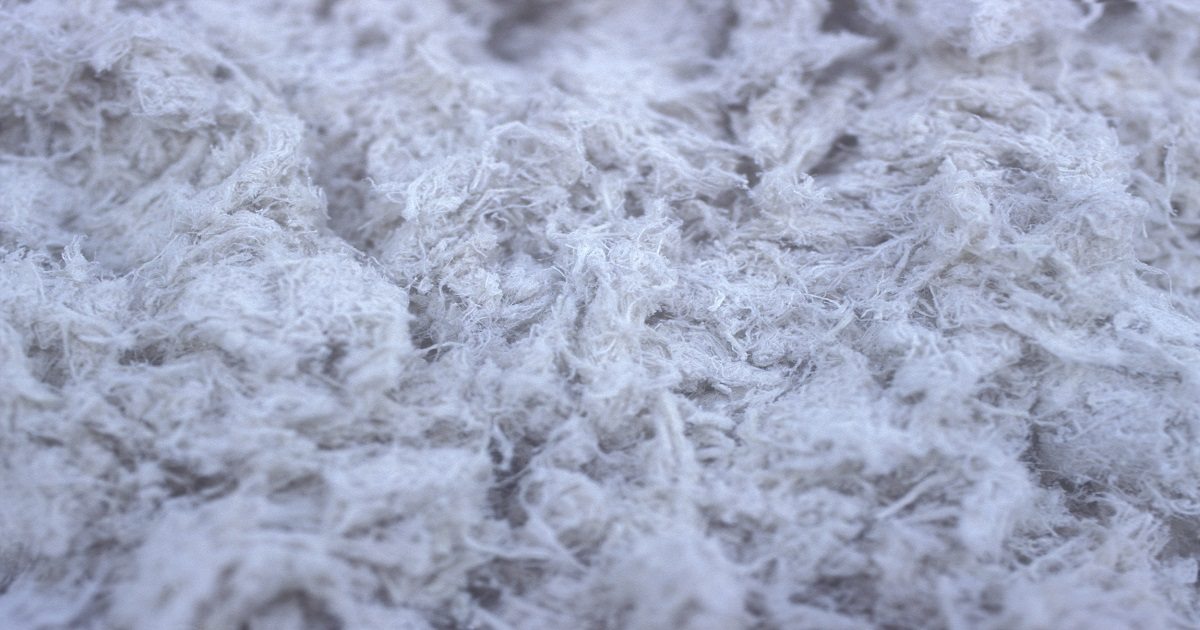Month: November 2011

Holiday Decorations Stored in Attics May Be Contaminated By Asbestos Dust
It’s the season when millions of people in New York and around the U.S. go up in their attics and dust off the holiday decorations, ornaments and boxes of lights to ready them for display. But holiday decorations may be hazardous if they are stored in an attic filled with asbestos-containing insulation. The dust may be deadly. And some vintage decorations may be dangerous too.
Asbestos, a known-cause of cancer in humans, was widely used in many products and buildings materials in the home during much of the 20thcentury. Many asbestos-containing materials remain in houses and buildings today. An estimated 33 million houses and businesses in the United States contain vermiculite insulation tainted with asbestos, according to the U.S. Environmental Protection Agency.
In addition, asbestos, a heat-resistant mineral fiber, was used in fireproof holiday decorations to create a white Christmas effect. The asbestos was marketed as pure white snow and snow drift to sprinkle on Christmas trees, wreaths and greenery. These products are dangerous and no longer sold on the market. But people often keep holiday decorations for many years and pass them down to the next generation, so some people may still have asbestos snow among their holiday decorations.
Any disturbance of asbestos —whether in insulation or decorations—can stir up the fibers and cause them to float in the air. Inhaling asbestos fibers increases the risk of developing serious respiratory diseases such as lung cancer, mesothelioma, a cancer of the lining of the lung and asbestosis, a scarring of the lung. An estimated 2,500 to 3,000 people in the U.S. die of mesothelioma each year.
People should not store holiday ornaments and decorations or let children play in an attic if it contains vermiculite insulation, according to the U.S. Environmental Protection Agency. Vermiculite insulation was often sold under the brand name Zonolite® as a do-it-yourself product to pour into the attic to enhance insulation in older homes. Vermiculite insulation resembles grey-brown or silver-gold pebbles. If your home as vermiculte insulation, you should assume it is contaminate with asbestos.
Asbestos-related diseases develop slowly with symptoms typically appearing 20 years to 50 years after exposure. Mesothelioma is an aggressive form of cancer, but there are treatment options including surgery, chemotherapy an radiation if the disease is diagnosed in time.

NIH Offers Help In Explaining a Mesothelioma Diagnosis to Children
Hearing the doctor say “you have mesothelioma” is a devastating blow to anyone. Most adults, however, have the education and capacity to understand the diagnosis, process the information and manage their emotions. However, when you try to explain mesothelioma and the complexities of the disease to your young children or grandchildren you will need to be patient and creative.
With so much emphasis placed on environmental issues recently, explaining that mesothelioma is caused by inhaling asbestos dust from a job held many years ago may be the easiest part. When it comes to explaining the treatment and prognosis, though, covering the basic facts may not be enough. More than likely the child will ask “why?” many times during the discussion.
The National Institutes of Health (NIH) is helping make the task easier by offering curriculum for children in grades 6 – 8 entitled “Rare Diseases and Scientific Inquiry.” The information helps students explore how scientists research rare diseases and treatments and learn more about the workings of the human body.
The rare disease materials were developed by leading scientists, educators, and curriculum experts, and combine cutting-edge medical research discoveries with state-of-the-art instructional materials.
The two-week curriculum includes lessons such as:
- What is a Rare Disease?
- What Causes Rare Diseases?
- The Importance of Medical Research
“The curriculum supplement will raise student awareness of rare diseases, including where to go for accurate information,” according to Stephen Groft, Pharm.D., director, Office of Rare Diseases Research, NIH. In addition, the material is designed to help students dealing with their own rare disease feel less isolated.
A rare or “orphan” disease status is assigned to a disease or disorder if it affects fewer than 200,000 Americans at any given time. Mesothelioma, a rare cancer caused by exposure to asbestos diagnosed in 3,000 Americans each year, is one of the close to 7,000 designated rare diseases.
To request these materials for your child’s classroom contact the teaching staff and direct them to the NIH website.

Catalog of Effects of Kinase Inhibitors May Aid Development of Anti-Cancer Drugs
Researchers at Fox Chase Cancer Center have catalogued the actions of 178 drugs that have the potential of blocking the activity of enzymes that promote growth of cancer cells, according to an article in the November issue of Nature Biotechnology.
The enzymes, called kinases, transmit signals and control complex processes in human cells. Kinases also function as drivers of a variety of forms of cancer, including mesothelioma. A number of studies suggest that kinases are involved in the gradual transformation of normal tissue in the lining of the lung into malignant pleural mesothelioma after exposure to asbestos. It’s unclear whether one or more kinases promotes the growth of mesothelioma.
More effective therapies and treatment options are needed for mesothelioma which is an aggressive cancer and has a low cure rate.
The scientists at Fox Chase Cancer Center in Philadelphia cataloged drugs including FDA-approved drugs, drugs undergoing clinical trial and laboratory compounds that are designed to block the cancer-promoting activity of any of more than 300 kinases. The body has more than 500 kinases that perform a variety of functions and many kinases are multi-taskers.
Drugs known as kinase inhibitors have the potential to be highly effective anti-cancer drugs that impede the cellular processes that cause cancer. Some cancer patients already receive kinase inhibitors as part of their therapy. And many additional kinase inhibitor drugs are under development. But the reactions of the drugs are complex.
Most kinase inhibitors act on more than one kinase. The drugs may disrupt both the growth of cancer and normal bodily processes at the same time, causing serious side effects such as heart problems.
With the cross-indexed catalog that the Fox Chase scientists have complied, researchers will be able to predict the complex reactions of the kinases inhibitors more accurately. That will allow for the development of drugs that block kinases that promote cancer while aiming to avoid side effects.
“These results have pushed the field closer to finding truly specific inhibitors of the processes that drive cancer,” Jeffrey R. Peterson, associate professor in the Cancer Biology Program at Fox Chase and senior author of the study said in a press release. “We now have a collection of kinase inhibitors that are more well-characterized and understood…. The next step is to use this information to identify specific, effective therapies that stop cancer in its tracks while avoiding healthy processes.”
Until the last few years, researchers didn’t have the tools to observe which kinase a drug acted upon. A new assay technology developed by Reaction Biology Corporation, a Pennsylvania-based provider of drug screening and profiling services, was used to catalog the kinase inhibitor effects.
Each year, approximately 2,500 to 3,000 people in the U.S. are diagnosed with mesothelioma. Most mesothelioma patients are older workers, retirees and veterans who were exposed to asbestos in the workplace. The use of asbestos is now restricted, but asbestos was widely use in the workplaces and in the military from the 1940s through the late 1970s.
Symptoms of mesothelioma typically take 20 years to 50 years to develop so a worker or veteran exposed to asbestos in the 1960s or 1970s may only recently have been diagnosed.
For more information about mesothelioma, click here.

On Veterans Day Honor All Veterans and Especially Those Struggling with Illnesses Such as Mesothelioma
Today is November 11, Veterans Day, a day to honor all United States military veterans. Initially established in 1919 to celebrate the end of World War I, the day is now a federal holiday honoring veterans of all wars with ceremonies and parades.
This year November 11 is once again declared the Veterans Day holiday through a proclamation by the President of the United States. Following is an excerpt from the proclamation:
“On Veterans Day, we pay tribute to our veterans, to the fallen, and to their families. To honor their contributions to our Nation, let us strive with renewed determination to keep the promises we have made to all who have answered our country’s call. As we fulfill our obligations to them, we keep faith with the patriots who have risked their lives to preserve our Union, and with the ideals of service and sacrifice upon which our Republic was founded.”
Unfortunately, to many of our veterans the day signifies another day of fighting a debilitating illness suffered during their service in the military. According to the latest U.S. Census Bureau data, there were nearly 21.9 million military veterans in the U.S. in 2009. Of those, about 5.5 million now suffer from some form of disability. A small number of these veterans are suffering from mesothelioma or asbestosis, caused by years of exposure to asbestos during their military service.
A recent study shines a light on the devastating effect of mesothelioma on veterans who served from World War II through the Vietnam era. The study presented at the American Society of Clinical Oncology conference and published in the Journal of Clinical Oncology analyzed 928 veterans. Researchers found the average veteran had about seven months to live after diagnosed with malignant pleural mesothelioma.
Due to the popularity of asbestos with the military, it has been estimated that nearly 30 percent of veterans who served between the 1940s and 1970s may have been exposed. For those exposed to asbestos, many factors determine whether or not they will develop mesothelioma. These factors include how much exposure, how long the exposure lasted, the fiber type and how they were exposed to the mineral. Age, sex, diet, family traits, lifestyle (including whether you smoke tobacco), and general health are also determinants.
Approximately 3,000 Americans are diagnosed with mesothelioma each year.

Allied Health Professionals Honored This Week, Provide Critical Support to Mesothelioma Patients
Mesothelioma, known to be caused by exposure to asbestos, is an aggressive cancer that is challenging to treat. When mesothelioma patients are not in the hospital for surgery or inpatient procedures, they are often receiving radiation, chemotherapy or having lab work done. With all these visits to the hospital and their doctors’ offices, mesothelioma patients and their family encounter allied health professionals nearly every day. This week, for all they do, allied health professionals are being recognized during National Allied Health Professionals Week. The week runs November 6-12.
According to ExploreHealthCareers.org there are 5 million allied health care providers in the U.S., who work in more than 80 different professions. Distinct from doctors and nurses, allied health professionals collaborate with physicians and other members of the health care team to deliver patient care services. They also provide a wide range of services including diagnostic, technical, therapeutic and direct patient care services.
Due to the rare and complex nature of mesothelioma, a large number of allied health professionals are needed to provide the appropriate level of support mesothelioma patients require. Allied health professionals are either technicians (assistants) or therapists/technologists. Technicians are trained to perform procedures, but are required to work under the supervision of technologists or therapists. Typically, a technologist gets a certificate with 2 years or less of higher education, and includes professions such as physical therapy assistants, medical laboratory technicians, radiological technicians and respiratory therapy technicians.
The field of allied health professions is one of the few areas of employment that are continuing to grow in the United States. According to the North Carolina Health Professions Data System, in North Carolina alone the number of allied health jobs increased by over 67 percent from 1999-2009. Healthcare jobs continue to be resilient to the current recession.
Since mesothelioma is such a complex disease, it is important for patients to receive multidisciplinary care from a team of specialists that is not limited to physicians or nurses. Following is a short list of allied health professionals that may be involved in the care of a mesothelioma patient:
- Respiratory Therapists. Evaluate, treat and care for patients with breathing or other cardiopulmonary disorders. Highly trained respiratory therapists may assume primary responsibility for all respiratory care, therapeutic treatments and diagnostic procedures.
- Anesthesiologist Assistants. Under supervision of licensed anesthesiologists (doctors), they operate anesthesia equipment, monitor patients, and assist in providing patient care before, during and after anesthesia.
- Cardiopulmonary Rehabilitation Specialist. Help patients understand and manage their heart or lung disease so they can live longer and do more, primarily by making sure the patient understands his condition and his medical regimen.
- Clinical Laboratory Science professionals. While not directly involved in the care of the patient, a medical technologist can discover the presence or absence of a disease. They typically maintain vital data for identifying and treating mesothelioma and other health conditions.
- Health Information Manager. These professionals manage and maintain all of the medical information vital to providing care to the patient. The health manager must capture each piece of information that is tracked every time health care personnel treats the patient including medical history, results of examinations, results of X-rays and laboratory tests, diagnoses, and treatment plans.
Allied health professionals have chosen a career where many must work long days, work under pressure and face life-and-death situations daily. If you see any this week, be sure to take a moment to thank them for their hard work and dedication.
For a list of Allied Health Professionals see ExploreHealthCareers.org .

Free Mesothelioma Patient & Treatment Guide
We’d like to offer you our in-depth guide, “A Patient’s Guide to Mesothelioma,” absolutely free of charge.
It contains a wealth of information and resources to help you better understand the condition, choose (and afford) appropriate treatment, and exercise your legal right to compensation.
Download Now